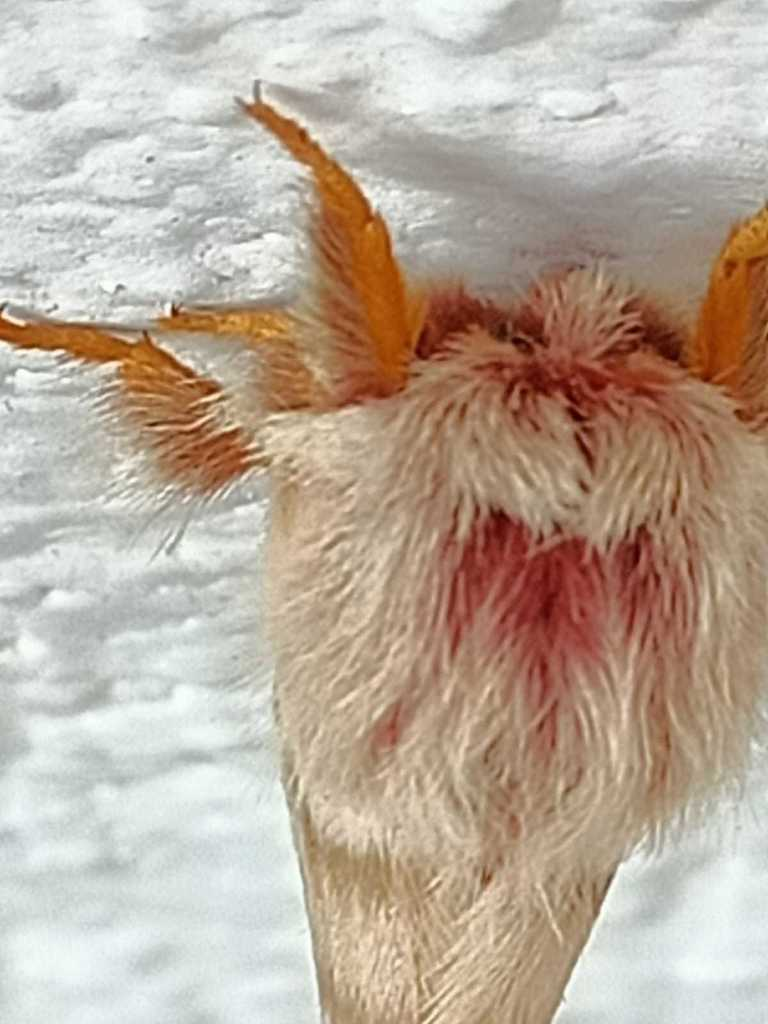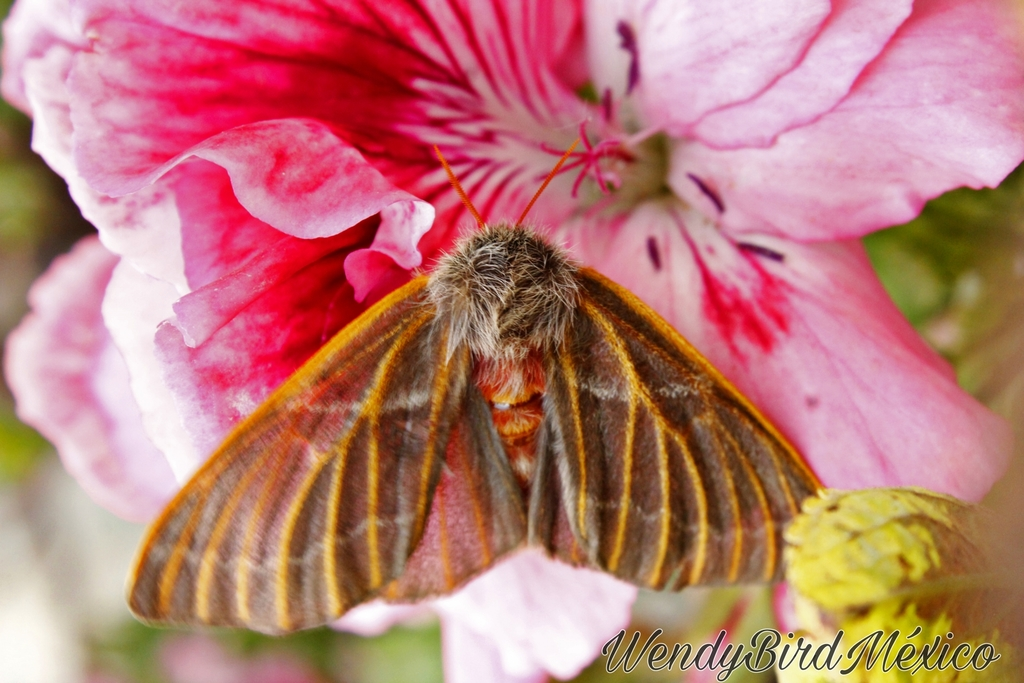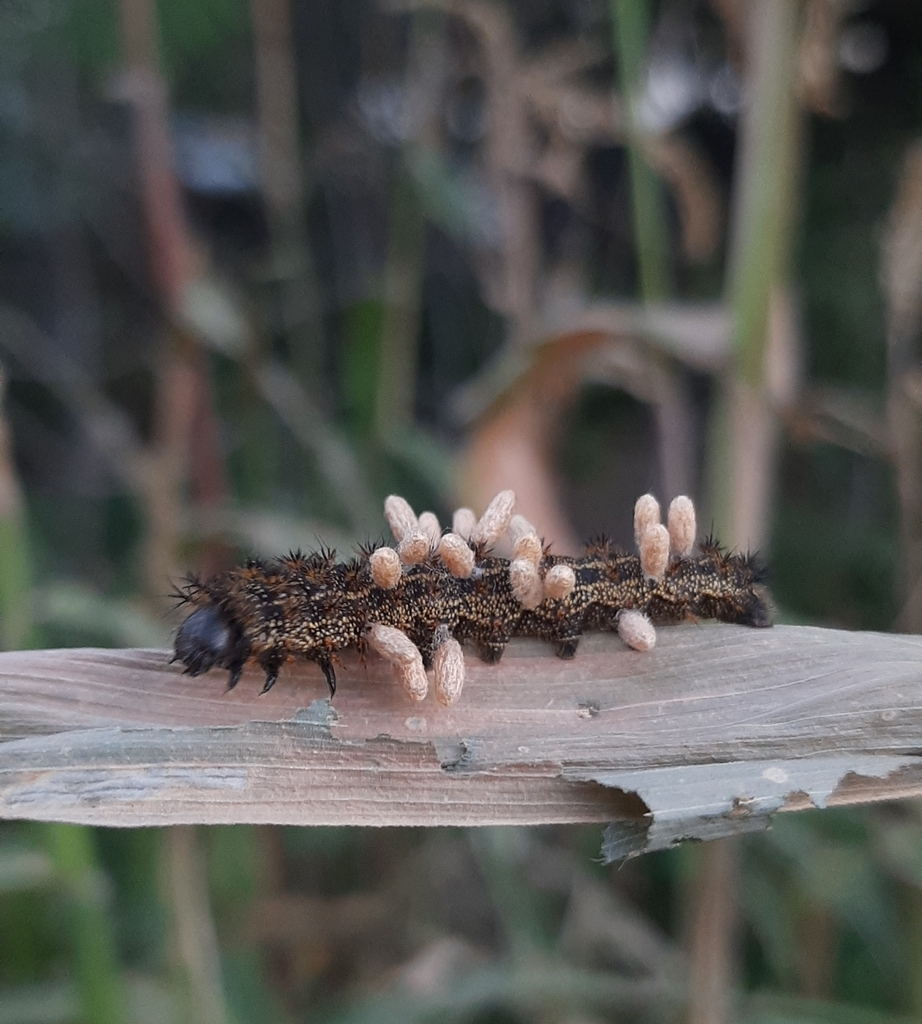Going down the long list of Hemileuca species...H. pica, the Magpie Hemileuca, was recognized as the same thing as H. hera. H. proserpina is now considered just a variant form of H. maia. H. rickseckeri and H. rubra were both classified as variants of H. electra. Rubra, the Red Hemileuca, is a fairly conspicuous variation, and so is H. rubridorsa, which is still recognized as a distinct species.
Hemileuca rubridorsa means "half white, red back," or the Red-Backed Hemileuca. It's another relatively little known Mexican species of Hemileuca. Little known, I suspect, because Mexican; that country has so far produced more interesting wildlife than wildlife biologists. The economic significance of "butterfly tourism" is likely to change this. Mexican authors whose work comes up on a web search are aware of H. rubridorsa, as a species found in a location some people want to "develop" or in a museum, but they have yet to take an interest in its life cycle. There is still room for some young person to become famous as an expert on this species.
Photo by Mamole.
Individual moths aren't always reddish all over. Some are whitish or blackish gray but they still have reddish veins in their wings like the Citheronias.
Photo by Jose Belem Hernandez Diaz. He suggested that people mention that it was found in Mexico. Nearly all rubridorsa are found in central Mexico, though it has been found (alive) in Florida.
All the Hemileucas are hairy; this is another species that looks as if it didn't even have a head.
Photo by Cecilia Ma. From the side that red-and-white tuft over the actual head would look like the head. The head is separate from the plump, hairy thorax, but it's just a little flat button to which the eyes and antennae attach.
Photo by Javier1028. The moths lack logical intelligence. When they were caterpillars, curling up with their bristly backs facing out protected them from many dangers. When they become moths, they no longer have bristles, and curling up makes it easy for predators to bite into them. It's possible that they may look to some predators like hornets about to sting, but oh well, no silk moth lives long in any case. Not having mouths means that silk moths can't eat or drink. As if designed to show the foolishness of Teen Romance, they can only mate. Once, maybe twice. Then if nothing's eaten them they die of old age.
Photo by Wendolyneleju. The Hemileucas seem to lose the scales on their wings more readily than most moths do.
Despite some fear, during the Hemileuca oliviae population explosion between 1910 and 1920, that H. rubridorsa was "allied with" H. oliviae, its host plant is mimosa.
Photo by Heri13. The severity of the sting depends on how many bristle tips touch your skin and whether any of them break off and stick in. The flat rosette shape of bristles on the back allows more bristle tips to touch a person, thus more venom.
Photo by Adrianacervantesf. This caterpillar was parasitized, possibly in the egg stage, by some sort of small flying insect. Several species of small wasps and flies specialize in parasitizing large caterpillars. The parasite eggs hatch inside the caterpillar, who may be smaller and wormier than its siblings. Before the caterpillar pupates, the parasites do; they gnaw their way out through the caterpillar's skin and spin their little cocoons on its back/ They seem quite comfortable in between stngingworms' bristles. The caterpillar may live long enough to pupate, but it won't reproduce.
While people who have had a close look at a stingingworm usually agree that the species ought to be extinct, human efforts to extirpate animal species have tended to backfire. It is more effective to work with nature and encourage natural predators to thin populations of species we don't like. Instead of trying to develop a poison spray to kill the stingingworms, we do better to focus on not using sprays that might harm those little wasps and flies that keep their numbers low.







No comments:
Post a Comment